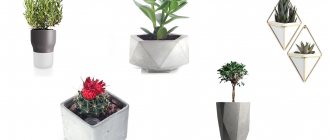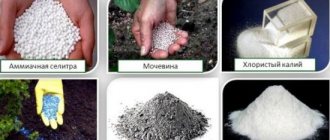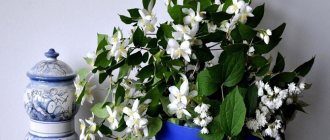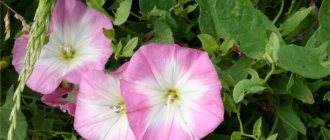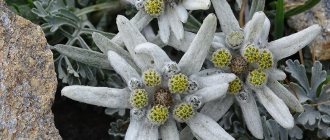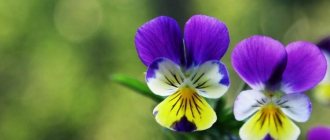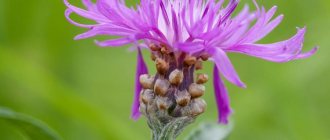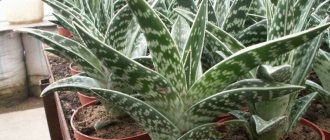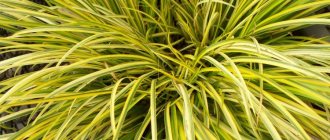Plants not only decorate our lives and make the table tasty and varied - they can heal! Everyone knows about the medicinal properties of St. John's wort, yarrow, plantain, sea buckthorn, garlic and many other “green doctors”, however, they often prefer tablets.
Of course, serious diseases require professional treatment and industrial drugs. However, there are many everyday situations when it is not necessary to run to the hospital for help - sometimes even leaves and herbs can help if used correctly.
We have already told you how to make your own first aid kit from plants from your garden plot, today we will tell you what to plant on the windowsill in your apartment so that you run to the doctors less.
Medicinal pelargonium or geranium
The most common indoor plant is geranium. Flower growers love it for its beautiful flowers, ability to heal and purify indoor air.
The most healing geranium is considered to be the one that blooms in bright red bouquets.
Pelargonium is endowed with astringent, soothing, and anti-inflammatory properties. Her abilities are known:
- normalize heart function;
- provide assistance in the treatment of acute and chronic gastrointestinal diseases;
- relieve pain from stomach and duodenal ulcers;
- help in the treatment of gastritis;
- get rid of dermatitis, boils, ulcers, carbuncles in the form of lotions and compresses.
Medicinal decoction of geranium
- 1 tbsp. Brew a spoonful of leaves or rhizomes of a houseplant with a cup of boiling water,
- keep in a water bath for 5-7 minutes,
- strain while hot through 3 layers of gauze,
- squeeze, then add water to the initial volume.
Drink 1 tbsp. l. three times a day a quarter of an hour before meals. To get rid of external problems, the broth is diluted with water 2 times.
From pressure
A treated infusion of the plant's roots is most often drunk to lower blood pressure and solve problems of the heart and blood vessels.
Geranium with honey
For pleurisy, you can simply chew 2-3 young geranium leaves twice a day, eating 1 tbsp. l. honey 30 minutes before meals.
The plant secretes such strong substances that it kills streptococci and staphylococci, and also has a calming effect, relieving stress and insomnia. Therefore, the best place for him is the bedroom.
TOP 15 best “healers” from the windowsill
Each medicinal flower can prevent the development of a specific disease. Let's look at the most useful herbs that you can grow at home, get acquainted with their effects, growing conditions and rules of use.
Aloe
The medicinal properties of aloe are widely used not only in folk medicine, but also in cosmetology. It is the main ingredient in many cosmetic products. Aloe juice can be used internally and externally.
Useful properties of indoor plants:
- has anti-inflammatory, antipruritic, anti-edema effects;
- is a natural detoxifier, that is, it removes harmful substances from the body;
- heals skin lesions, stomach and duodenal ulcers during peptic ulcer disease;
- strengthens the immune system;
- destroys bacteria, viruses and fungal infections;
- When used externally, it moisturizes and regenerates cells. {2}
The maximum concentration of nutrients is in the lower leaves more than 15 cm long, which are collected from plants aged 3 years and older.
To obtain aloe juice, its leaves must be passed through a meat grinder and then squeezed in gauze. Store the resulting medicine in the refrigerator for no more than 3 days. To increase shelf life, alcohol can be added to the concentrate, ratio 4:1. Before use, dilute the tincture with water 1:3.
2 weeks before cutting the leaves you should stop watering. This helps to increase the concentration of nutrients.
Aloe is easiest to propagate by root shoots. It is better to separate the babies in the spring.
To successfully grow aloe, it is necessary to provide suitable conditions:
- bright light, but protect from direct sunlight;
- neutral or slightly acidic soil, consisting of turf and leaf soil, sand in a ratio of 2: 1: 1;
- air temperature in summer is 22-25 ⁰С, in winter – no more than 14 ⁰С;
- watering as the top layer dries, preventing water from getting on the outlet;
- transplantation every 2 years.
Kalanchoe
Medicinal herbs on the windowsill include only Kalanchoe with babies on the leaves, which is also called pinnate. For medicinal purposes, the juice of the plant is used, which has anti-inflammatory, antibacterial, and wound-healing effects. It cleanses wounds of pus, accelerates their healing, and is also suitable for treating coughs, runny nose, oral diseases, conjunctivitis, and joint diseases.
Indications for taking Kalanchoe juice orally:
- gastritis;
- gastroduodenitis;
- chronic enterocolitis.
Take 1 tsp, diluted in ½ tbsp. water 1 hour before meals or 2 hours after meals up to 3-4 times a day. The course of treatment is 3-5 weeks.
To grow Kalanchoe at home, you will need children that form on the leaves, or cuttings. They need to be separated from the mother bush, planted in fertile soil, covered with a jar.
Conditions for growing a medicinal plant:
- lighting - daylight hours are 10-12 hours, Kalanchoe is light-loving, it is best to grow it on a western or eastern window sill in summer, a southern window in winter;
- temperature – 18-28 ⁰С in summer, 14-18 ⁰С in winter;
- watering - water after the top layer of soil dries;
- substrate - a mixture of leaf and turf soil, sand, peat in a ratio of 2:4:1:1.
Golden mustache
Golden mustache, callisia fragrant or spironema fragrant contains a high concentration of antioxidants, including ascorbic acid. Golden mustache juice is rich in B vitamins, as well as microelements, and therefore improves overall well-being. This is one of the most valuable medicinal plants on the windowsill.
It is used for the following pathologies:
- atherosclerosis, varicose veins, thrombosis, thrombophlebitis;
- hematopoietic disorder;
- inflammatory diseases of the stomach, pancreas, intestines;
- metabolic disorders;
- obesity;
- diabetes.
This “home doctor” has a wide range of actions, but there are also contraindications. If you have allergic reactions or chronic diseases, you should consult your doctor.
Leaves and tendrils of indoor plants are suitable for making juice. They can be taken in equal proportions, washed and passed through a meat grinder. Then squeeze out the juice using gauze. Use it internally or externally.
It is better to propagate golden mustache by rosettes that are located at the ends of the shoots.
Landing rules:
- Cut off the rosette and immerse it in water to ¾ of its length for 2 weeks.
- After roots appear, plant in substrate. Any soil will do, but it is better to choose fertile soil.
Golden mustache is easy to care for. He is light-loving and heat-loving. It can be grown in direct sunlight at a temperature of 25-27 ⁰C, air humidity - 60%. Watering is moderate but regular. If the room is too hot, you should additionally spray the plant with settled water.
Geranium
Geranium or pelargonium leaves are used in medicine and cosmetology. They heal wounds, disinfect, improve the condition of dry and oily skin, and prevent the appearance of scars and age spots. Due to their anti-inflammatory effect, they are effective for pimples, acne, and boils.
The leaves contain the highest concentration of bioactive substances. They contain pectins, tannins, tannins, phytoncides, organic acids, vitamins, and calcium.
For oral administration, an infusion can be prepared from the leaves of a medicinal houseplant. Pour one crushed geranium leaf into 1 tbsp. boiling water, leave for 20 minutes. Drink 100 ml before meals 2 times a day.
Care for geraniums looks like this:
- It is not demanding on the soil, you can feed it once a month in the summer, once every 2-3 months in the winter;
- place the flower pot on the sunny side;
- protect from drafts, maintain air temperature no higher than 27 ⁰С in summer and no lower than 14 ⁰С in winter;
- Water abundantly, but do not allow the soil to become waterlogged.
To make geraniums lush, you need to shorten the top in the fall.
Myrtle
Myrtle is a natural antibiotic. It destroys pathogenic bacteria in the air. One tree kills up to 20% of streptococci and 40% of staphylococci.
The bactericidal properties of indoor plants can be used in medicine.
Benefits of myrtle:
- accelerates recovery from colds and flu;
- improves well-being in diseases of the upper respiratory tract;
- strengthens the immune system;
- reduces pain;
- has an antiallergic effect.
To improve health, you should use tincture of myrtle leaves. To prepare it, you need to place 100 g of plant material in a 1 liter jar and fill it to the top with vodka. Leave for 2 weeks. Drink 20-30 drops in 20 minutes. before meals.
Technique for growing myrtle tree:
- In July or January, cut cuttings 5-8 cm long from the bottom of the bush.
- Plant in a pot with a soil mixture consisting of peat, sand and leaf soil, ratio 2:1:2. It will take 3 weeks to root.
- Transplant the young plant into a pot with a diameter of 7 cm, which is best placed on a western or eastern windowsill. As the soil dries, water with warm water, do not spray the bush. Maintain air temperature 18-20 ⁰С in summer and 10-12 ⁰С in winter.
Myrtle does not like heat and scorching sun. But bright diffused light is vital for the plant. If it is deficient, the leaves will begin to turn yellow and curl, and the shoots will become retracted. Overdrying of the substrate leads to leaf fall.
Primrose
The most useful garden primrose, but also the indoor one has medicinal properties: diuretic, diaphoretic and analgesic. Its leaves are used for rheumatism to relieve pain, as well as diseases of the bladder and kidneys. They contain a huge amount of ascorbic acid.
But primrose flowers can be brewed and drunk as tea. This drink calms the nervous system, reduces anxiety, relieves headaches and insomnia.
Its recipe:
- 3 tbsp. l. crushed dried flowers pour 1 tbsp. boiling water
- Leave for 15 minutes.
Drink in small sips throughout the day.
The fastest way to propagate primrose is by cuttings. They need to be harvested after flowering. Plant in the soil at an angle, deepening it by 1 cm. Before rooting, maintain the temperature no higher than 16-18 ⁰C. This process can take up to 3 months.
The following conditions are suitable for primrose:
- temperature not higher than 20 ⁰С;
- high illumination;
- watering 2-3 times a week;
- acidic or neutral soil;
- high air humidity.
Crassula or money tree
In terms of beneficial properties, money tree is not inferior to aloe. This medicinal plant has anti-inflammatory, wound-healing, antiviral, antifungal and antipruritic effects. Juice or cake from the leaves is used in the form of compresses for joint diseases, for rinsing the mouth or throat, and as nasal drops for sinusitis. But you can use it internally only after consulting a doctor.
Crassula contains arsenic compounds, which are toxic.
The money tree is propagated by leaf or stem cuttings. Before planting, it is advisable to place them in water so that roots appear. Young plants need moderate watering; excess liquid leads to rotting of the root system. No additional moisturizing is required.
In summer, it is better to keep this indoor medicinal plant on the balcony. Although it is light-loving, it must be protected from direct sunlight.
Pike tail
Pike tail or mother-in-law's tongue is an unpretentious indoor plant that has the following healing effects:
- immunostimulating;
- painkillers;
- anti-inflammatory;
- choleretic, diuretic and diaphoretic;
- expectorant;
- hemostatic;
- adaptogenic – helps to cope with stressful situations.
Pike tail also exhibits antibacterial activity against streptococci, staphylococci, and fungal spores.
All medicinal products based on pike tail leaves must be taken according to the instructions, and do not exceed the dosage. In case of overdose, the saponins in the composition have a toxic effect.
Recipe for a decoction of pike tail leaves that has an antibacterial effect:
- Finely chop a large leaf of the plant.
- Pour 1 tbsp. boiling water
- Cook over low heat for 25 minutes.
Drink a few sips throughout the day or use as a lotion.
Conditions for growing medicinal flowers:
- abundant watering once every 10 days;
- wiping the leaves with a damp cloth;
- temperature up to 25 ⁰С in summer and 15 ⁰С in winter;
- diffused light;
- a wide and not very deep pot;
- soil - a mixture of leaf, turf soil and sand, ratio 4:2:1.
Tradescantia
The scope of application of Tradescantia in folk medicine is wide. The leaves of the plant are used as a hemostatic and wound healing agent. The juice is even rubbed into the gums for periodontal disease.
Tincture from the leaves of the plant helps with diseases of the gastrointestinal tract, colds, and sore throats.
Its recipe:
- Fill the glass 1/3 full with crushed Tradescantia leaves.
- Fill to the top with vodka.
- Pour into a 0.5 liter jar, close the lid, and leave for 3 weeks.
Drink 50 ml of tincture diluted in equal proportions with water every 2 hours before meals.
A lush indoor plant can be grown in just a year. A small cutting with a couple of leaves is suitable for rooting.
To grow Tradescantia at home, you will need:
- bright diffused light;
- abundant watering as the soil surface dries;
- in winter the air temperature is no higher than 12-16 ⁰С.
Young plants are replanted annually, and adults once every 2-3 years.
Agave
Agave, as a medicinal plant, has the following properties:
- increases the body's resistance to colds;
- reduces body temperature;
- normalizes metabolism and appetite;
- promotes rapid tissue healing;
- reduces headaches and pain due to neuralgia.
Agave leaves are used in cooking and added to salads as a vitamin component. Juice is also obtained from them, which is drunk on an empty stomach, 5-10 ml.
Agave can be purchased at a flower shop or grown from seeds. After sowing at a temperature of 21-25 ⁰C, sprouts appear within 5-7 days. After a month, the bush needs to be replanted, but the root collar cannot be buried; it can be sprinkled with sand around it.
Favorable conditions for growing agave:
- low humidity;
- temperature 20-28 ⁰С in the spring-summer season, 10-15 ⁰С – in the autumn-winter season;
- south or southeast orientation;
- Watering is rare, the plant is drought-resistant.
When watering, do not allow water to get into the outlet.
Ficus
In addition to the fact that ficus perfectly purifies the air, it also has healing properties:
- is an expectorant and analgesic;
- has a fixing effect on diarrhea;
- improves the condition of hemorrhoids and vascular diseases;
- reduces pain in joint diseases. {3}
The leaves of this indoor plant are used to prepare ointments, compresses, and tinctures.
Recipe for ficus medicinal product:
- Pour 20 g of leaves into 40 ml of vodka.
- Leave for 10 days.
Use the product for rubbing and compresses for arthrosis, rheumatism, arthritis.
To grow such a useful plant at home, it is necessary to provide abundant watering in summer and moderate watering in winter. Ficus is a moisture-loving flower, but the soil must dry out. It is better to place the pot with the plant in a sunny place, maintaining high humidity and air temperature. Normal temperatures in summer are 25-30 ⁰С.
Indian onion
Although Indian onion has a powerful medicinal effect, in folk medicine it is used only externally. It is suitable for the treatment of skin and joint diseases, insect bites. For frequent headaches, the juice of the leaves can be applied to the temples.
After applying Indian onion juice, a tingling and burning sensation is felt, but the discomfort quickly passes.
This indoor plant is propagated by bulbs. They are planted in pots with a diameter 5 cm larger than the bulb itself.
Caring for Indian onions:
- watering 2-3 days after the soil surface dries;
- bright lighting, but without direct sunlight on the foliage;
- replant every 2-3 years.
In summer, it is better to keep the pot with the plant on the balcony, where there is fresh air, but the temperature should not fall below 12 ⁰C.
Hibiscus
The flowers of hibiscus or Chinese rose have a high concentration of vitamins B, A, C. In addition, the composition contains potassium, iron, phosphorus, magnesium, calcium and other minerals, as well as antioxidants and flavonoids.
Flower tea is an excellent tonic, vitamin, immunostimulating and antidepressant. It normalizes blood pressure, reduces pain, and the level of bad cholesterol in the blood. {4}
Recipe for making tea from Chinese rose flowers:
- 2 tsp. dried flowers pour 300 ml of boiling water.
- Leave for 5 minutes.
If you have hypotension, it is better to avoid this tea.
Hibiscus care:
- Sunlight is important for flowering;
- optimal temperature 20-25 ⁰С;
- fresh air indoors, growing on the balcony in summer;
- abundant watering, spraying.
For abundant flowering, it is necessary that the roots in the pot be a little cramped.
Begonia
It is the begonia leaves that are of greatest value. They contain fatty acids and phytoncides, which increase performance, strengthen the immune system, and improve mood. {3}
When taken orally, begonia-based products reduce spasms and abdominal pain, and when used externally, they heal wounds.
Tincture recipe for stomach ulcers:
- Pass the leaves of the plant through a meat grinder and squeeze out the juice. The cake can not be thrown away, but used for compresses on sore joints.
- Add alcohol, maintaining the ratio 1:1.
- Place in a dark place for 2 weeks.
Take the tincture 10-15 drops, diluting 1 tbsp. l. water. Frequency of administration: 3 times a day for 30 minutes. before meals.
Begonia is a whimsical indoor plant. A well-lit room, diffused light, abundant watering 2 times a week, but without stagnation of water, suit her. Humidity must be maintained high, but you should not spray the flower. It is better to place the pot on wet peat. Suitable soil: a mixture of leaf soil, peat and black soil in a ratio of 2:1:1.
Yarrow
Yarrow is one of the most useful garden plants that you can grow at home. It should be transplanted into a pot at the end of August. A shoot with part of the rhizome will do. Before planting, shorten the stem at a height of 5 cm from the ground.
Before the onset of cold weather, it is better to leave the pot in the fresh air, moisten the soil as it dries.
All winter, fresh leaves can be used as a hemostatic, anti-inflammatory, and disinfectant. In cooking, the root leaves are used as a seasoning that improves digestion.
Many houseplants contain toxic substances, so it is important to know exactly which flowers can be used and which cannot. Share your experience of using plants that grow on your windowsill for medicinal purposes.
Pike tail
Another popular plant that is loved for its unpretentiousness is Sansevieria. It also has such unusual names as “mother-in-law’s tongue” and “pike tail”.
This humble indoor flower has rare medicinal properties, such as resisting adverse conditions. Therefore, during the rampant flu and other infectious diseases, mother-in-law’s tongue increases the resistance of the inhabitants of the house to all viruses.
Tincture recipe
The medicinal tincture is useful for inflammation of the appendages. To prepare it:
- Fill 1/3 cup with finely chopped sansevieria leaves;
- add vodka to the brim, pour into a container with dark glass;
- let it brew for 21 days in the refrigerator;
- strain through 3 layers of gauze, then store in the same bottle.
Take 1 tbsp. morning and evening after meals. Course – 14 days.
Kalanchoe pinnata
The medicinal properties of Kalanchoe pinnate have its leaves, which contain flavonoids, vitamin C, enzymes, iron, aluminum, copper, calcium, manganese, magnesium.
The leaves and shoots of Kalanchoe are prepared, and then the juice is collected from them. First, the green mass is kept at a temperature of +5+10°C in a dark place for about 7 days.
Then they are crushed, squeezed, filtered, poured with alcohol at a ratio of 5:1 and stored in the refrigerator.
to list all the diseases that this miraculous juice helps with! Let's name just a few of them:
- influenza and other colds;
- polio;
- panaritiums;
- boils;
- suppuration;
- burns;
- injuries;
- corneal erosion;
- pigmentary degeneration of the retina;
- keratitis;
- viral diseases;
- tuberculosis;
- stomach ulcer, etc.
The plant has bactericidal, wound-healing, bacteriostatic, hemostatic, and antiviral properties.
Methods of application:
- for diathesis, burns, wounds, use a paste of leaves;
- for cuts, cut the sheet, apply it to the wound, cover it with film and bandage it;
- for eye diseases, the juice is dropped into the eyes;
- for gastrointestinal diseases - taken orally.
Tradescantia
The medicinal properties of tradescantia for problems with the gastrointestinal tract, sore throats, colds, even tuberculosis are well known.
The recipe for making the tincture is the same as described above. Drink 50 ml of tincture every 2 hours, diluting with the same amount of water before meals.
If you develop periodontal disease, chew the leaves of this plant and rub its juice into your gums.
For hematomas, cuts, and scratches, apply fresh Tradescantia greens to the sore spot.
Home medicinal plants: indoor flowers with medicinal properties
If you grow homemade medicinal plants, then you can consider that you have your own free pharmacy on the windowsill. However, in this case, it is worth knowing those plants that provide the greatest benefit to your health. Therefore, further in our article on All Dachas we will present medicinal house plants, which will have photos and names.
Aloe
Everyone knows this houseplant. In former times, aloe was considered a traditional indoor flower, the healing properties of which were very familiar to our grandmothers. Today, the plant continues to delight us with its healing properties in natural and synthetic forms.
Aloe varieties.
But before we name the medicinal properties of aloe, let's list all its medicinal varieties. So, succulents are perennial plants that are distinguished by their ability to grow in dry areas. Aloe belongs to this type of plant. This flower has several medicinal varieties, namely:
- Aloe vera (traditional).
- Scarlet tree.
- Soapy scarlet.
- Aloe ferox.
Composition of Aloe.
The plant has a very rich composition of various components. Here you can find:
- Antibiotic of natural origin barbaloin.
- Polysaccharides.
- Tannins.
- Enzymes and resins.
- Bioflavonoids.
- Fructose and amino acids.
- Phenol compounds.
- Glucose, vitamins: A, E, C and B.
- Zinc, magnesium, calcium, copper.
Using aloe at home.
Now you know how medicinal aloe is. Now it’s worth talking about the use of this plant for medicinal purposes. But it’s immediately worth noting that aloe needs to be properly prepared in order for it to help get rid of various diseases and strengthen the immune system.
Plant juice.
Freshly squeezed aloe juice is the most common remedy for the treatment of many diseases. The lower leaves with good maturity are suitable for its preparation. They should be carefully cut from the stem and put in the refrigerator for 2 hours. They are first wrapped in parchment.
In the dark, the work of biogenic stimulants will start in the leaves. And this will significantly increase the beneficial properties.
Afterwards, the leaves are crushed with a blender and poured with cool water.
1 part green leaves and 3 parts water!
Let the medicine brew for three hours in a dark place. Next, squeeze the juice through cheesecloth into any glass container. Now you can take the medicine with honey. There is no need to dilute it additionally with water.
Aloe juice is used for various diseases, and you can also rinse your hair with it and add it to restorative masks.
Alcohol tinctures.
To make a useful medicine from aloe, use alcohol or Cahors.
Cahors.
You will need aloe leaves and honey in 1 part. Cahors should be used in two parts.
There will be no special recommendations here, but it is better to take honey in liquid form, and Cahors honey is of high quality. Aloe leaves are also prepared as in the first recipe.
Next, honey is gradually introduced into the Cahors. You need to stir and wait for complete dissolution. Agave is ground in a blender and added to Cahors with honey. Mix everything well and close with a tight lid. Next, the composition is placed in a cool place, where it should infuse for a whole week.
Before use, stir the tincture well.
On vodka.
The next recipe will require a little more ingredients, namely:
- Agave juice - 1 part,
- Lemon juice with zest - 1 part,
- Honey – 1 part,
- Viburnum berry juice – 2.5 parts,
- Vodka – 1 part.
All the above components are mixed well. The result should be the consistency of a homogeneous mass. It is poured into a ceramic container and covered with a lid. The mixture is infused for a week. At the same time, it is shaken periodically.
How to prepare decoctions of aloe?
Decoctions of indoor aloe vera are a cure for:
- Hemorrhoids and osteochondrosis.
- Skin wound.
To prepare it you need to take 100 grams of leaves that are already crushed. They are poured with boiled water in the amount of half a liter and simmered in a water bath for about 15 minutes. When the broth has cooled, soak gauze with it and apply it to the diseased area of the body. Keep the bandage on for 30 minutes.
If you suffer from osteochondrosis, then add 3 tablespoons of honey to the broth. Also 2 tablespoons of vodka. The resulting mixture is applied to problem joints. Next, wrap it in film and wrap it in a warm cloth.
It is recommended to use this compress throughout the night.
Aloe and honey.
Now we’ll tell you how to make honey with aloe. This recipe will not seem complicated to you. The ingredients are taken in an amount of 1:1 and placed in a glass jar, which is sent to a dark and cool place for 5 hours. The medicine can be used for various diseases, namely:
Three times a day, 1 teaspoon for men who have problems with erectile dysfunction. This remedy is also prophylactic for male prostatitis.
To strengthen the immune system, add lemon juice to the composition.
To treat cough, add a little vodka.
When should you not use aloe vera?
It is worth remembering that all medicines, including plants, have the potential to be harmful to our body. To avoid any difficulties when using aloe vera, you need to consider the following information:
- Aloe vera should not be used even in the form of drops for a runny nose by pregnant women. Substances that are in its composition can negatively affect pregnancy.
- For hemorrhoidal and uterine bleeding, this medicine is also prohibited for use.
- Postpone taking aloe if gastrointestinal diseases worsen.
- For cystitis and nephritis, do not take aloe orally.
- Allergic reactions may occur from the use of aloe-based medications, in which case the use of aloe is discontinued.
- Children over 12 years old can take aloe orally. In other cases, decoctions and tinctures are used as rubbing.
Kalanchoe
If you are breeding Kalanchoe for home treatment, then further you will learn about the benefits and harms of this plant. This flower belongs to the Tolstyankov family. The plant is endowed with straight and strong stems, on which there are oblong leaves of green and bluish tint. The plant can bloom bright red flowers, but this does not happen every year.
How is Kalanchoe useful?
Thanks to its beneficial benefits, Kalanchoe can:
- Have an antibacterial and anti-inflammatory effect.
- Assist in the healing of various wounds and cuts.
- When used internally, it has a beneficial effect on metabolism and bowel movements.
- Help cleanse the body of toxins.
- Help the functioning of the gallbladder and liver.
- Reduce blood cholesterol levels.
- Use for serious bleeding.
Kalanchoe can treat a wide variety of human ailments. Namely:
- Stomatitis and herpes,
- Varicose veins and arthrosis,
- Periodontal disease and sinusitis,
- Otitis and conjunctivitis and otitis.
During pregnancy, treatment with the Kalanchoe plant is possible, but the important thing here is that the pregnancy is without complications!
It is also worth saying that Kalanchoe is not suitable for treating children under three years of age. In other cases, the plant juice is diluted with water or milk. Natural juice is not used in the treatment of a child. After all, it can harm the sensitive membranes of children in the form of a burn.
Healthy recipes from Kalanchoe juice.
Pure Kalanchoe juice does not need to be infused or boiled. In order for all its qualities to manifest itself, you just need to dilute it with milk or clean water. Freshly picked leaves of the plant are used to prepare the juice. The juice is squeezed out of them using gentle movements. For external use, compresses and lotions are made from it. Compresses are suitable if you have:
Skin fungus. Here, gauze is used, which is dipped in juice and applied to the affected area. To secure the lotion, use a patch or bandage.
The lotion needs to be changed 3 times a day!
Purulent inflammation of the wound. You will need a gauze bandage that is soaked in juice. It must be fixed on an area of skin and also changed 3 times a day.
Stomach ulcer or cystitis. In this case, you will need 1 teaspoon of juice, which should be freshly squeezed. It is diluted in a glass of water and drunk before meals 3 times a day.
Runny nose. The squeeze from Kalanchoe is diluted with milk in parts 1:3 and 2 drops are instilled into each nostril.
Otitis media and colds. Juice from the Kalanchoe plant, diluted with water, is dropped into the ears.
Tinctures from the Kalanchoe plant.
In addition to juice, tinctures from Kalanchoe have proven themselves to be excellent. They are also easy to prepare. For example, a sufficient number of leaves of this plant are plucked and filled with water in a ratio of 1:5. After which the mixture is heated by steam and cooled. Only after this the infusion is used for medicinal purposes.
What does Kalanchoe treat? For example, its decoction will help get rid of warts and any skin diseases. To achieve the desired result, they simply wipe the areas of the skin that are irritated.
Kalanchoe is also used for varicose veins and burns. But the special benefits of the juice of this indoor flower are manifested in cases of throat disease and periodontal disease. The infusion is useful for people with low stomach acidity. It is also used for colitis. The therapeutic effect will be achieved if the juice is drunk 2 times a day before eating. You need to take a couple of sips.
You can even prepare an infusion from dry leaves purchased at the pharmacy!
Tincture of Kalanchoe and vodka.
If you pour vodka over the leaves and let them brew, the healing composition will cure joint pain. This composition is also good to use for colds. They rub it on the chest and throat.
Alcohol tincture recipe:
You will need 2 tablespoons of fresh Kalanchoe leaves, which need to be crushed and poured with a glass of alcohol. You will need a glass jar, which is closed and placed in a dark place for two weeks. After this time, the tincture is filtered and treated with it. However, before use, the tincture is diluted with water.
Kalanchoe ointment.
From this houseplant you can prepare an ointment that will relieve fungus and other skin ailments. In this case, you should take 45 ml of plant juice and mix it with 90 grams of lanolin. It’s also worth adding ¼ of novocaine and furazolidone to the composition.
The ointment is used for dermatitis of varying degrees and abscesses. It can also be used for bedsores and burns.
The product can only be used for 2 weeks!
When the use of Kalanchoe is contraindicated.
This flower should not be used for the following diseases:
- Low blood pressure and oncology,
- Liver and allergies to natural substances.
The most popular indoor plants for the treatment of various kinds of diseases were listed above, and now we will tell you about other green inhabitants of our homes, which also have a healing effect.
Golden mustache
Callisia fragrant is another name for the golden mustache plant. Today it is considered an incredibly valuable home specimen among indoor plants. Therefore, let's find out what the golden mustache plant treats. So, in appearance, this is a rather tall flower, which can very rarely bloom with pleasant-smelling flowers.
Fragrant callisia has a unique composition. Here you can find various substances, namely:
- Flavonoids,
- Phytostreols,
- Microelements and various vitamins,
- Pectins,
- Beta-sitosterol,
- Tannins.
The use of a golden mustache will be useful to many people. And this is all because it is able to cure from:
- Joint diseases,
- Excess weight and impaired metabolism,
- Anemia and diabetes.
- Colds and many other ailments.
Infusion of golden mustache water.
If you have a golden mustache, then the tincture prepared from it is suitable for internal use. It is useful to use in case of unhealthy gastrointestinal tract. And also during remission in cancer. And to get rid of alcohol addiction, drink the infusion 3 times a day for 30 days.
To prepare, you need a freshly cut leaf, which is placed in any glass jar and poured with boiling water. Next, the medicine must infuse. Therefore, the container is wrapped and left alone for a day. When the infusion is ready, its hue will be raspberry-violet.
Vodka infusion.
Below are instructions for the golden mustache tincture, which includes vodka. It is used for bruises and osteochondrosis. It can also treat diseases of the nervous and cardiovascular systems.
To prepare the tincture you need to: cut off 40 stems from the side shoots and pour in a liter of 40% vodka. The tincture is infused for 15 days. In this case, it must be shaken every 3 days.
This infusion is taken according to the following scheme: Take 100 ml of water and 30 drops of infusion. Everything is mixed and taken after 12 hours. Reception is carried out for 10 days, and then a break for 10 days.
The juice of the plant is also taken internally, and the cut leaves in crushed form are suitable for external use.
Contraindications for taking Golden Usa.
If you have prostate adenoma or allergies, you should not use this medicine. Kidney disease is also considered another contraindication. Not recommended for use during pregnancy. And children under 12 years of age should also refrain from taking the drug.
Ficus
Ficus is considered one of the most useful indoor plants. This unpretentious flower perfectly purifies the air in the apartment and treats a huge number of diseases.
Compress
To prepare a decoction for a compress, first boil the greens for 3 minutes, brush with honey, tie on your back and chest, secure well, tie a scarf on top, and leave the compress overnight.
Ficus tincture
The medicinal tincture very well treats arthritis, radiculitis and osteochondrosis:
- pass the ficus leaf through a meat grinder,
- pour 100 ml of vodka,
- keep in the refrigerator for 2 weeks.
- filter through 2 layers of gauze, pour into a container with dark glass.
Warm in hot water before use.
Before going to bed, take a bath (39 degrees) with the addition of 200 g of salt, then rub the sore spot with tincture of indoor ficus, wrap yourself in a warm scarf. Course - 10 days.
Juice and vinegar
Warts and wen will disappear if you add 50 g of vinegar essence to 100 g of ficus juice. Make a hole in the patch, stick it to the wart, drop 2-3 drops of the mixture into the hole where the wart is peeking out.
The burning will begin immediately. If the burning sensation can be tolerated, then hold it for 10-12 seconds. If it burns very strongly, rinse quickly with water.
Plants useful for the home
And this is not the entire list of plants that create a cozy, pleasant atmosphere in the house and bring great benefits to the human body.
Philodendrons, anthurium, dieffenbachia are beautiful indoor plants that can improve water and gas exchange in the room.
Thuja, cypress and cryptomeria are room air fresheners. These are garden flowers that can be successfully grown at home.
To feel the healing effect of a particular flower, you will need to have several plants in the house at once. It is worth remembering that in poorly ventilated rooms with a small area it is not recommended to abuse their quantity.
This is due to the fact that medicinal indoor plants are able to absorb large amounts of oxygen at night.
Today, there are special presentations that contain detailed information about all the beneficial properties of indoor flowers.
Kalanchoe
Homemade ginseng is used to treat skin problems . Indoor Kalanchoe is good at treating ulcers, bedsores, fistulas, purulent infections in the form of boils, festering wounds.
Kalanchoe juice
To obtain medicinal juice, cut off the leaves and place them in the refrigerator for 7 days. After this, the juice is crushed, squeezed out, kept in the refrigerator for a day, then passed through 3 layers of gauze, sterilized, and preserved in jars.
It is best to store in the refrigerator for no more than a year. As a rule, 4 layers of gauze soaked in Kalanchoe juice are applied to the wound.
For anemia
Kalanchoe is often called a living tree. A living tree grows in almost every home, but not everyone knows that the “babies” that grow thickly on the leaves can be put in salads or simply eaten 1 tablespoon daily. This “dish” will help get rid of anemia and increase the body’s defenses.
For varicose veins
The tincture is recommended for use for varicose veins : rub your legs from bottom to top.
Kalanchoe ointment
To get rid of cervical erosion , insert tampons with ointment every 4 hours. The erosion will disappear within a week.
To make a medicinal ointment, combine lanolin with the sap of a living tree in a ratio of 5:3, then add 50 g of petroleum jelly.
Echinacea
This houseplant is recognized as the best healer for weakened immunity, treatment of smallpox, arthritis, mumps, burns, infectious diseases of the bladder and many others.
The flowers of this indoor plant are used to prepare the tincture. Echinacea can kill a large number of pathogenic viruses, bacteria, and fungi, as evidenced by studies conducted in Germany.
The tincture is sold at the pharmacy, which should be taken 5-10 drops 3 times a day.
Vegetable garden on the windowsill
Why did we talk about the vegetable garden when we started the article with the medicinal properties of plants? All because the usual greens, which you add to salads, soups and tea without hesitation, can also be medicinal! And it can also be successfully grown on a windowsill.
Dill
The strong spicy taste is not the only reason why this plant should be grown on the windowsill. For example, did you know that dill essential oil helps separate mucus from the walls of the bronchi, which is why it can and should be used for colds, bronchitis and even pneumonia?
- 12 plants for colds that you can grow in your garden
Have you felt weak and become completely unstuck in bad weather? Ask Mother Nature for help!
The same essential oil promotes better formation of bile and digestive enzymes, “disinfects” the genitourinary and digestive systems. An infusion of dill stems and leaves is also used as a diuretic and antispasmodic, to lower blood pressure in hypertension, and to relieve pain from ulcers and cholecystitis. Lotions made from dill decoction help with conjunctivitis and swelling under the eyes, and also as a wound-healing agent for the skin.
Treatment with dill preparations and even eating it is strongly not recommended for people with low blood pressure!
Thyme
The leaves of miniature thyme bushes are not only an independent “tea” or a component of the “herbes de Provence” seasoning, beloved by many, but also a completely full-fledged medicinal plant.
The basis of its essential oil is thymol, which is responsible for the antibacterial, antiviral and analgesic properties of thyme. In this regard, preparations from the plant (and even just a paste of crushed leaves) work great on wound-healing dressings, as a rinse for inflammatory diseases of the oral cavity. Also, decoctions and infusions of thyme are effective for colds and digestive tract disorders.
Spinach
This annual herbaceous plant is one of the world's top vegetables for nutrients, antioxidants and folic acid. Therefore, spinach must be included in the diet.
However, it also has other equally important properties. Thus, due to the large amount of fiber and coarse fibers, it is called a “broom” for the intestines - it effectively improves gastrointestinal motility and relieves constipation. It also has a beneficial effect on blood vessels, is useful for the functioning of the thyroid gland, and is used for anemia and impaired vision, even in the treatment of certain nervous disorders and respiratory diseases.
Basil
Basil essential oil is full of substances beneficial to humans, thanks to which it perfectly stimulates the immune system and protects us from infections.
An infusion of this herb is used for gastritis and colitis, as an antitussive, for neuroses and headaches, for low blood pressure, for inflammation of the kidneys and bladder, colds and runny nose. Basil is also a wonderful antioxidant and a remedy that improves the secretion of breast milk in nursing women.
Chewing raw basil leaves, as some sources advise to eliminate bad odor and fight oral bacteria, is not recommended due to the presence of mercury compounds that damage tooth enamel. So use decoctions and tinctures of this plant for rinsing.
Parsley
Another type of familiar spicy herb, which is widely used in cooking. And in medicine? Same!
This plant is a champion in the content of vitamins C, A and E, mineral salts and phytoncides. Parsley is an excellent helper for gastrointestinal diseases and indigestion. It is also used to normalize high blood pressure, to increase the tone of the smooth muscles of the bladder and uterus, to strengthen capillary vessels and for loss of appetite. Even as a breath freshener and anti-sweating agent.
Due to its pronounced diuretic effect, parsley should not be consumed by pregnant women, and due to the presence of a large amount of essential oils, it should not be consumed by nursing mothers.
Mint
Of all the species of this herbaceous plant, we are interested in peppermint, a cultural hybrid.
In addition to the charming aroma that magically transforms your dishes from tea and sauce to salad and roast, it is capable of much more. For example, mint is used as an external antiseptic for burns, inflammatory processes, and insect bites. Mint tea or decoction is used internally for nausea, vomiting, and diarrhea. Gargling with mint helps with toothache, upper respiratory tract diseases, hoarseness, and bronchitis. It also improves appetite and soothes headaches.
Rosemary
The use of this plant in cooking helps to increase the secretion of gastric juice and improve digestion.
Scientists have also confirmed the ability of rosemary to improve mood, relieve stress and enhance the ability to concentrate - why not a coffee substitute? An aqueous infusion of rosemary mixed with lavender improves cerebral circulation, memory and vision. And because of its volatile essential oils, it is an excellent remedy for colds.
Of course, we have not listed all the plants that are beneficial for health and beauty that you can plant directly on the windowsill of your apartment. If desired, you can add ginseng, onions, bay leaves, garlic, sprouted wheat seeds to the above herbs... Just do not forget that many medicinal plants have their own contraindications for use. Therefore, do not be lazy to consult with your doctors before self-medicating with indoor flowers and greenery.
Be healthy!
Agave
Aloe is considered the most famous home doctor. The leaves of this medicinal houseplant are applied to long-term non-healing wounds, burns, corns, and calluses. Or soak a piece of gauze in medicinal agave juice, apply it to the sore spot, change the bandage to get a positive result.
Many women make aloe face masks to clear the skin of acne and rashes.
Geranium
Geranium, or crane flower, appeared in Russia back in the 18th century. Today this plant decorates every second windowsill, and for good reason: it perfectly disinfects the air and mercilessly destroys pathogenic microorganisms. Moreover, the essential oils that geranium produces have a calming effect, eliminate headaches, relieve stress and improve sleep - which is why it is preferable to grow this flower in the bedroom. And according to folk superstitions, geranium protects the home from negative energy and attracts good luck.
Callisia
The golden mustache has become a favorite of many gardeners. He treats perfectly:
- Burns, lichens, ulcers, promotes rapid cleansing of purulent wounds;
- Diseases of the stomach, gall bladder, intestines;
- Diseases of the circulatory system;
- Metabolic disorders in diabetes and obesity;
- Joint diseases;
- Increases immunity.
Leaves or purple shoots are used to prepare the infusion. 3 different recipes at your service.
- Brew 1 large mustache leaf with 1 liter of boiling water for a day.
- Place 16 “knees” in a thermos, add boiled water, let it brew for 7 hours.
- Chop the leaf or shoots, add cold water, bring to a boil, leave for 6 hours.
The resulting product should be taken 1 tbsp. spoon, three times a day 30 minutes before meals.
European cyclamen (Cyclamen vernum)
The medicinal properties of European cyclamen are also surprising in their effectiveness. Cyclamen tubers (pharmacists call them “dryakna tubers”) have been used since ancient times to treat sinusitis. In addition, it helps with gastrointestinal diseases and is wonderfully soothing.
To make medicine , you need to chop cyclamen tubers, pour 0.5 liters of boiling water over them, leave for 15 minutes, strain. Take the tincture 2-3 times a day.
In folk medicine, this remedy is recognized as effective for menstrual irregularities and accompanying nervous disorders, for digestive disorders and colic, for joint pain and severe forms of hemorrhoids.
For colds , including sinusitis and sinusitis, freshly squeezed juice from cyclamen tubers is instilled into the nose. You need to sit with your head thrown back for at least 5 minutes (be sure to breathe through your nose!), and then go to bed.
After 10-15 minutes. After the procedure, the juice makes itself felt : sneezing, coughing, profuse sweating and mucus from the nose begins. This state lasts about a day, after which the patient falls asleep and wakes up healthy.
Indian onion
Medicinal indoor onions have many names. You can recognize it by its wide leaves and large scaly bulb.
Hell root can replace a whole list of medications, but be careful, it is a very poisonous plant, so it can only be used externally.
It treats skin diseases and joint diseases well.
If you suffer from headaches , then regularly lubricate your temples with the juice of mature herbs. They say that the pain immediately subsides.
If you are suffering from radiculitis or rheumatism , then take the leaves of the plant, rub it well, lubricate the affected area, and wrap it in a scarf. Leave for 2 hours. You will feel a tingling sensation at first, but it will pass quickly.
Mucus can be used to lubricate herpes, warts, abscesses, cuts, tumors, and mastitis can be treated with compresses. In addition, Indian onions bloom beautifully, purifying the air from harmful bacteria. Look at the photo of the flowering plant.
Ficus benjamina
Ficus benjamina, a domestic tree that came to us from hot countries, is capable of not only humidifying the air and producing additional doses of oxygen, but also fighting harmful substances - for example, benzene and phenol. It develops quickly, and with proper care it grows up to 2–3 meters in height. At the same time, ficus does not require regular watering - the main thing is to regularly treat the crown with warm water from a spray bottle and protect the plant from direct sunlight. By the way, the ficus is considered the official symbol of Bangkok, and the oldest plant of this species lives in the Royal Botanical Garden of Sri Lanka: it is 150 years old and has a crown with an area of 2.5 thousand square meters, for which local residents nicknamed the tree Turtle.
